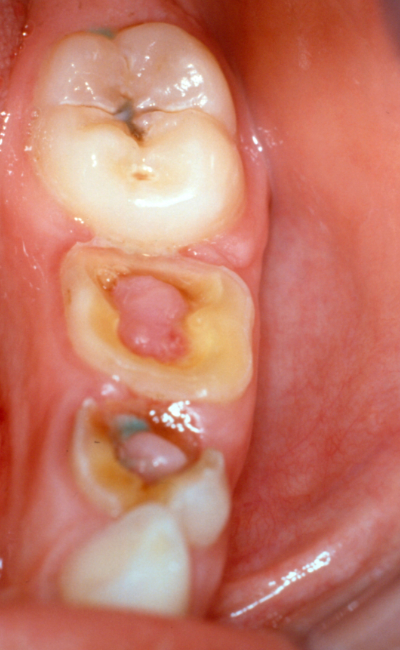Pulp Polyp, also called as Chronic Hyperplastic Pulpitis, or Proliferative pulpitis is a productive pulpal inflammation due to extensive carious exposure of any young pulpal tissue. This is a type of irreversible pulpitis, which is chronic and usually asymptomatic in nature.
It is characterized by development of granulation tissue, covered by epithelium and it results from irritation for a long time.
Causes of Pulp Polyp
- Dental caries in young tooth where significant loss of tooth is seen.
- Fractured tooth, causing trauma to the pulpal tissues.
- Mechanical irritation from chewing, and bacterial irritation provides stimulus.
Symptoms of Pulp Polyp
- They are asymptomatic, and sometimes the masticatory stress can lead to some tenderness.
- Sometimes, localized bleeding may occur.
- The polyps cover the entire cavity by enlarging itself.
Diagnosis
- Appearance of Polypoid tissue – A fleshy, reddish mass fills most of the pulp chamber or extends beyond the tooth structure.
- Polypoid tissue is less responsive when compared to normal pulp tissue.
- Radiographs show a large, open cavity with direct access to the pulp chamber.
- Response is seen on electric pulp testing too.
Treatment
Removal of the polypoid tissue, followed by the extirpation of the pulp. When the pulpal mass is removed, bleeding can be controlled by application of pressure. Formocresol dressing is placed after the entire pulp is removed.

Have you tried using ferric sulfate instead the more caustic formocresol? It is easily found in the product viscostat (Ultradent) that is used to dry up bleeding around crown preps. It is a good alternative to that other stuff that will one day be outlawed in medicine. Or you can just sterilized it with a laser!
Useful